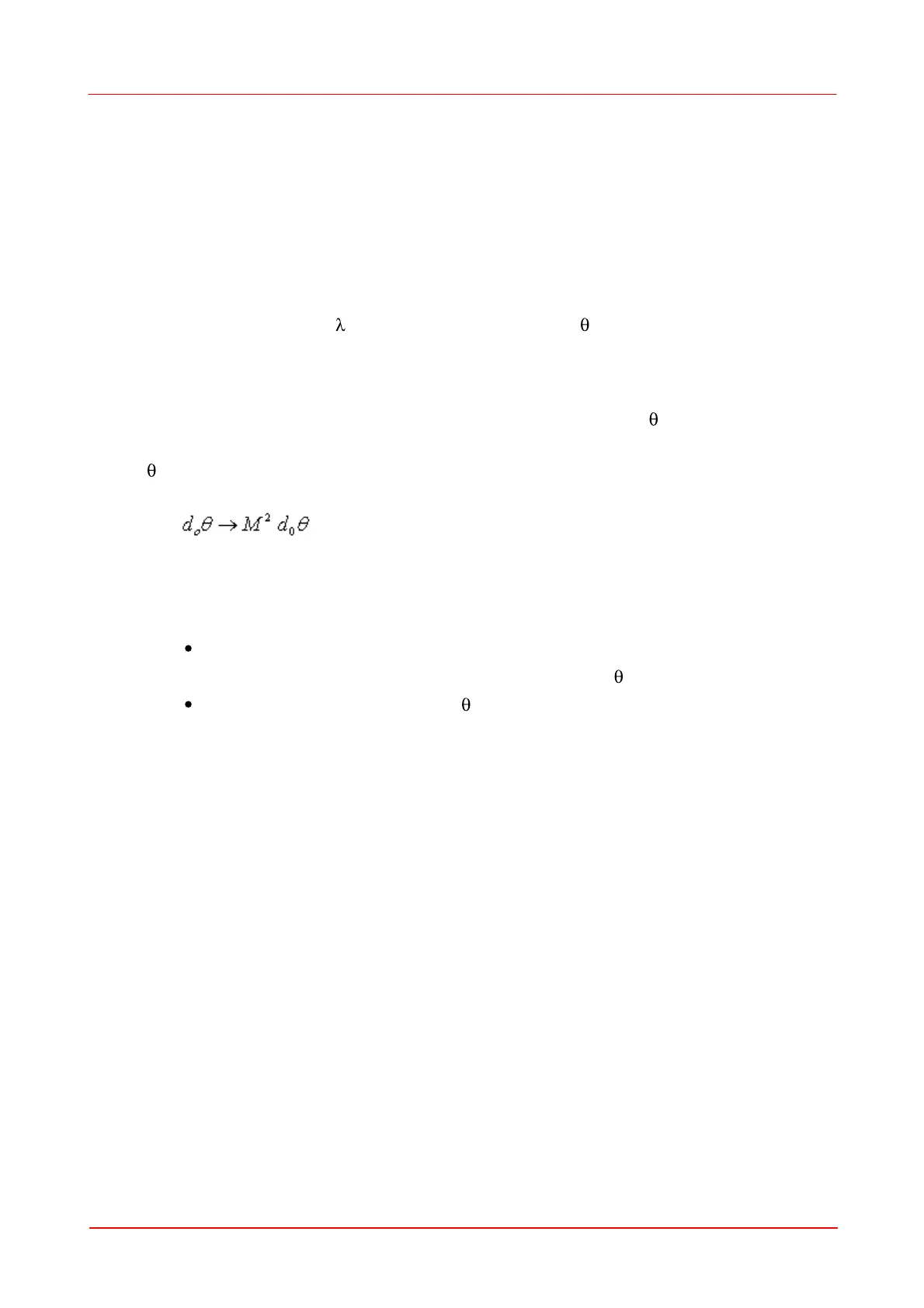© 2011 Thorlabs
82 Thorlabs Beam 4.0
Beam Propagation Measurements according to ISO 11146 standard disclose
beam quality and describes it as a single value either the Times-Diffraction-Limit
Factor M
2
(also known as beam quality factor or beam propagation factor) or its
reciprocal Beam quality K = 1/M
2
whereas the beam quality K is direct proportional
to the quality level (K=1 optimal, decreasing for worse quality), its reciprocal value M
2
(M
2
=1 optimal, increasing for worse quality) is used more often.
Please do not confuse beam quality (K≤1) and times-diffraction-limit factor (M
2
≥1).
Diffraction Limit
Depending on wavelength and beam divergence angle there is a limit for
minimum beam waist diameter d
0
called diffraction limit which cannot be
decreased further more by theory.
M
2
is an expression of how close the beam parameter product d
0
* is to the
diffraction limit of a perfect Gaussian beam. For beams of worse quality the product
d
0
* is increased by the factor M
2
where d
0
is beam waist at the focus point of the focussing lens.
M
2
is also known as
the ratio of the waist diameter d
0
of the measured beam to that of an ideal
Gaussian beam (TEM
00
) at same divergence angle .
the ratio of the divergence angle of the measured beam to that of an ideal
Gaussian beam (TEM
00
) at same waist diameter d
0
,
Worse beam quality is a result of laser imperfections like inhomogeneities which
lead to appearance of higher transversal modes.
How to measure Beam Quality
If only the fundamental mode TEM
00
(which has an ideal Gaussian shape) is existing
- this ensures an ideal beam quality (K=1, M
2
=1) with diffraction limited waist size.
The existence of higher modes decrease beam quality which leads to larger waist
diameters. Often, such distortions can be easily discovered by looking at the non
Gaussian beam profile.
But in many cases, several higher modes are distributed in a way that generate a
nearly Gaussian shape but the beam itself suffers from a bad beam quality.
The following example shows a beam with nearly perfect Gaussian shape but having
a multi-mode origin leading to bad quality M
2
= 1.79.

